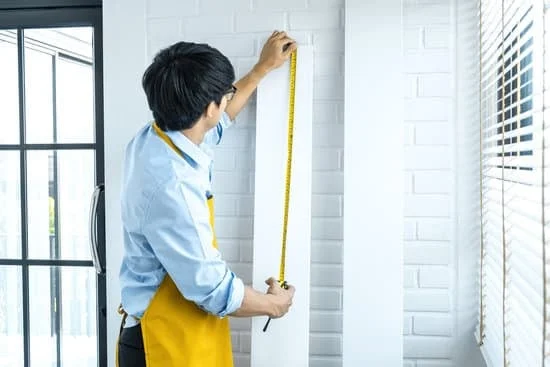Are you wondering who does home improvement loans? Home improvement loans are a popular choice for homeowners looking to make renovations, upgrades, or repairs to their homes. These loans provide the financial flexibility needed to fund these projects and enhance the value of a property. In this article, we will explore the concept of home improvement loans, their importance for homeowners, and where to find them.
Home improvement loans are an essential tool for homeowners who want to invest in their properties. Whether it’s remodeling a kitchen, adding a new bathroom, or installing energy-efficient upgrades, these loans can make it all possible. Understanding the different types of home improvement loans available and their pros and cons is crucial in making informed decisions about financing home improvement projects.
In addition to discussing the types of home improvement loans, this article will also explore the eligibility criteria for obtaining such financing. Factors that impact eligibility and tips for improving one’s chances of securing a home improvement loan will be covered in detail. Furthermore, we will delve into where homeowners can find reputable lenders and online platforms for applying for home improvement loans and how to compare different options for the best loan terms.
Types of Home Improvement Loans
There are several types of home improvement loans available to homeowners, each with its own set of advantages and disadvantages. When considering a home improvement project, it’s important to understand the various options for financing in order to make an informed decision about which type of loan best suits your needs. Here are some of the most common types of home improvement loans:
- Personal Loans: Personal loans are typically unsecured loans that can be used for a variety of purposes, including home improvements. They generally have fixed interest rates and repayment terms, making it easier to budget for the cost of your project.
- Home Equity Loans: Home equity loans allow homeowners to borrow against the equity they have built up in their property. These loans often have lower interest rates than personal loans, but they do require using your home as collateral.
- Home Equity Line of Credit (HELOC): A HELOC is similar to a home equity loan, but instead of receiving a lump sum upfront, borrowers can access a line of credit that they can draw from as needed. This flexible option can be useful for ongoing or long-term projects.
It’s important to carefully consider the pros and cons of each type of home improvement loan before making a decision. Personal loans may be easier to qualify for and offer fixed terms, but they often come with higher interest rates. Home equity loans and HELOCs can offer lower interest rates, but using your home as collateral involves added risk. Knowing which option is best suited for your financial situation will help make the process smoother.
In addition, there may be specific eligibility requirements for each type of loan, such as credit score minimums or income thresholds. Understanding these criteria can help you determine which loan products you are qualified for and what steps you may need to take in order to improve your eligibility.
Ultimately, when deciding on the right type of home improvement loan for your needs, it’s important to weigh the benefits and drawbacks while also considering your personal financial circumstances and long-term goals.
Eligibility Criteria for Home Improvement Loans
When seeking a home improvement loan, it is important to understand the eligibility criteria that lenders consider when evaluating loan applications. This section will explore the key factors that determine eligibility for home improvement loans and provide tips for improving your chances of approval.
Factors That Determine Eligibility for Home Improvement Loans:
– Credit score: Lenders typically consider the borrower’s credit score to assess their creditworthiness. A higher credit score can increase the likelihood of approval and may result in more favorable loan terms.
– Income and employment status: Lenders will evaluate the borrower’s income and employment history to ensure they have the financial capacity to repay the loan.
– Loan-to-value ratio: Lenders may consider the loan-to-value ratio, which compares the amount of the loan to the appraised value of the property. A lower ratio indicates less risk for the lender.
– Debt-to-income ratio: Lenders also look at the borrower’s debt-to-income ratio, which compares their monthly debt payments to their income. A lower ratio demonstrates a strong ability to manage existing debts while taking on a new loan.
Tips for Improving Your Eligibility for a Home Improvement Loan:
1. Check your credit report: Review your credit report for any errors or discrepancies that may be affecting your credit score. Dispute any inaccuracies and work on improving your credit before applying for a home improvement loan.
2. Reduce existing debts: Paying down existing debts can improve your debt-to-income ratio and free up more funds for home improvement loan payments.
3. Shop around for lenders: Different lenders may have varying eligibility requirements, so it is beneficial to compare options and find a lender who is more likely to approve your loan application based on your financial profile.
By understanding what lenders look for in a home improvement loan applicant and taking proactive steps to improve your eligibility, you can increase your chances of securing financing for your home renovation projects.
Where to Get Home Improvement Loans
When it comes to obtaining a home improvement loan, there are various options available for homeowners. From traditional financial institutions to online platforms, finding the right lender is crucial for securing the best loan option.
Financial Institutions
Many traditional banks and credit unions offer home improvement loans to qualified borrowers. These institutions usually have specific eligibility criteria and may require a good credit score, stable income, and sufficient equity in the property. It’s essential to research different financial institutions and compare their loan terms, interest rates, and fees before making a decision.
Online Platforms
In recent years, there has been an emergence of online lenders who offer home improvement loans. These platforms provide a convenient way for homeowners to apply for loans from the comfort of their homes. Online lenders often have streamlined application processes and may cater to individuals with varying credit scores. However, it’s important to carefully review the legitimacy of these online platforms and ensure they adhere to relevant regulations.
Comparing Different Lenders
Before committing to a home improvement loan, it’s advisable to compare offerings from multiple lenders. This can include traditional banks, credit unions, online lenders, and even government programs or grants that may be available in your area. By comparing interest rates, terms, fees, and customer reviews, homeowners can make an informed decision about which lender is the best fit for their specific needs.
By understanding where to get home improvement loans and comparing different lenders, homeowners can find the most suitable financing option for their renovation projects. Whether choosing a traditional financial institution or exploring online platforms, it’s important for individuals
The Application Process for Home Improvement Loans
When it comes to applying for a home improvement loan, the process can seem overwhelming at first. However, with the right knowledge and preparation, it can be a smooth and straightforward process. Below is a step-by-step guide to help you navigate the application process for a home improvement loan.
Step 1: Determine Your Home Improvement Needs
Before applying for a home improvement loan, it’s essential to have a clear understanding of your renovation or repair needs. Whether you’re planning to remodel your kitchen, add an extra bedroom, or fix a leaky roof, having a detailed plan and cost estimate will help you determine how much funding you require.
Step 2: Research Lenders and Loan Options
Once you have a clear idea of your renovation needs, it’s time to research different lenders and their loan options. Consider visiting traditional banks, credit unions, and online lenders to compare interest rates, terms, and fees. Additionally, look into government-backed programs such as FHA Title I loans or energy-efficient mortgages (EEMs) that offer specific benefits for certain types of home improvements.
Step 3: Gather Required Documents
Before starting the application process, gather all necessary documents such as proof of income, employment information, tax returns, credit reports, and details of your proposed home improvements. Having these documents ready will expedite the application process and improve your chances of approval.
By following these steps in the application process for home improvement loans,, homeowners can make informed decisions when selecting the right loan option for their specific needs. Taking the time to research lenders and their offerings will ensure that homeowners secure favorable terms for their renovation projects.
Understanding Interest Rates and Terms
When it comes to home improvement loans, understanding the interest rates and terms is crucial for making the right financial decision. Interest rates for home improvement loans can vary depending on the type of loan, the lender, and the borrower’s creditworthiness. Typically, borrowers with higher credit scores are offered lower interest rates, while those with poor credit may face higher rates or may not qualify at all.
It’s important to compare different lenders to find the best interest rates and loan terms that suit your financial situation. Online platforms make it easy to compare offers from various financial institutions, allowing borrowers to choose the most favorable option. Additionally, some government programs offer low-interest home improvement loans for specific purposes such as energy-efficient upgrades or repairs for low-income households.
In terms of loan terms, borrowers should consider the repayment period and any associated fees or penalties. Longer loan terms may result in lower monthly payments but could mean paying more in interest over time. On the other hand, shorter loan terms may have higher monthly payments but result in less interest paid overall. Understanding these trade-offs is essential for choosing a home improvement loan that aligns with your budget and goals.
| Loan Type | Interest Rate | Loan Term |
|---|---|---|
| Home Equity Line of Credit (HELOC) | Varies (typically variable rate) | 10-20 years |
| Personal Loan | 5%-36% | 1-7 years |
Overall, understanding interest rates and terms is essential for anyone who does home improvement loans. By researching different options and considering their individual financial circumstances, homeowners can make informed decisions about their home improvement financing needs.
Tips for Choosing the Right Home Improvement Loan
When it comes to choosing the right home improvement loan, there are several factors that homeowners should consider. One of the most important considerations is the type of loan that best suits your needs. The two main types of home improvement loans are secured and unsecured loans.
Secured loans require collateral, such as a home or other property, while unsecured loans do not. Each type has its own pros and cons, so it’s crucial to weigh these carefully before making a decision.
Another key factor to consider is the interest rates and repayment terms offered by different lenders. Interest rates can vary significantly between lenders, so it’s important to shop around and compare offers from multiple financial institutions. Additionally, be sure to inquire about any fees associated with the loan, such as origination fees or prepayment penalties, as these can impact the overall cost of the loan.
It’s also essential for homeowners to assess their own financial situation and determine how much they can realistically afford to borrow and repay. Taking on too much debt can lead to financial strain, so it’s important to choose a loan amount and repayment term that aligns with your budget. By carefully evaluating these factors, homeowners can make an informed decision when selecting a home improvement loan that meets their needs.
Tips for Choosing the Right Home Improvement Loan
| Factors to Consider | Details |
|---|---|
| Type of Loan | Secured vs Unsecured Loans |
| Interest Rates and Repayment Terms | Compare offers from multiple lenders |
| Assessing Financial Situation | Determine affordable borrowing amount and repayment terms |
Case Studies
In conclusion, home improvement loans can be a valuable resource for homeowners looking to make necessary upgrades and renovations to their properties. Whether it’s a small bathroom remodel or a complete home renovation, there are various types of home improvement loans available to suit different needs and budgets. From personal loans to home equity lines of credit, homeowners have options when it comes to financing their projects.

When considering who does home improvement loans, it’s important to research and compare different financial institutions and online platforms that offer these loan products. Each lender may have different eligibility criteria, interest rates, and terms, so it’s essential to shop around for the best home improvement loan options. Additionally, understanding the application process and required documents can help streamline the borrowing process and increase the chances of approval.
For many homeowners, successful home improvement loan stories have transformed their properties and lives. By taking advantage of these loans, individuals have been able to increase the value of their homes while creating comfortable living spaces for themselves and their families.
From kitchen makeovers to energy-efficient upgrades, home improvement loans have made these projects achievable for many people. As with any financial decision, it’s crucial to carefully consider all factors before choosing a home improvement loan that best suits your needs.
Frequently Asked Questions
What Is the Minimum Credit Score for a Home Improvement Loan?
The minimum credit score for a home improvement loan varies depending on the lender. While some may require a score of 620 or higher, others may be more flexible, especially for government-backed loans.
What Is the Typical Term for a Home Improvement Loan?
A typical term for a home improvement loan can range from 2 to 12 years. However, it ultimately depends on the lender, the amount borrowed, and the borrower’s creditworthiness.
What Is the Difference Between a Home Loan and a Home Improvement Loan?
The main difference between a home loan and a home improvement loan lies in their purpose. A home loan is used to purchase or refinance a property, while a home improvement loan is specifically for renovation or repair projects on an existing property. Additionally, the approval process and terms may differ between the two types of loans.

I’m thrilled to have you here as a part of the Remodeling Top community. This is where my journey as an architect and remodeling enthusiast intersects with your passion for transforming houses into dream homes.





